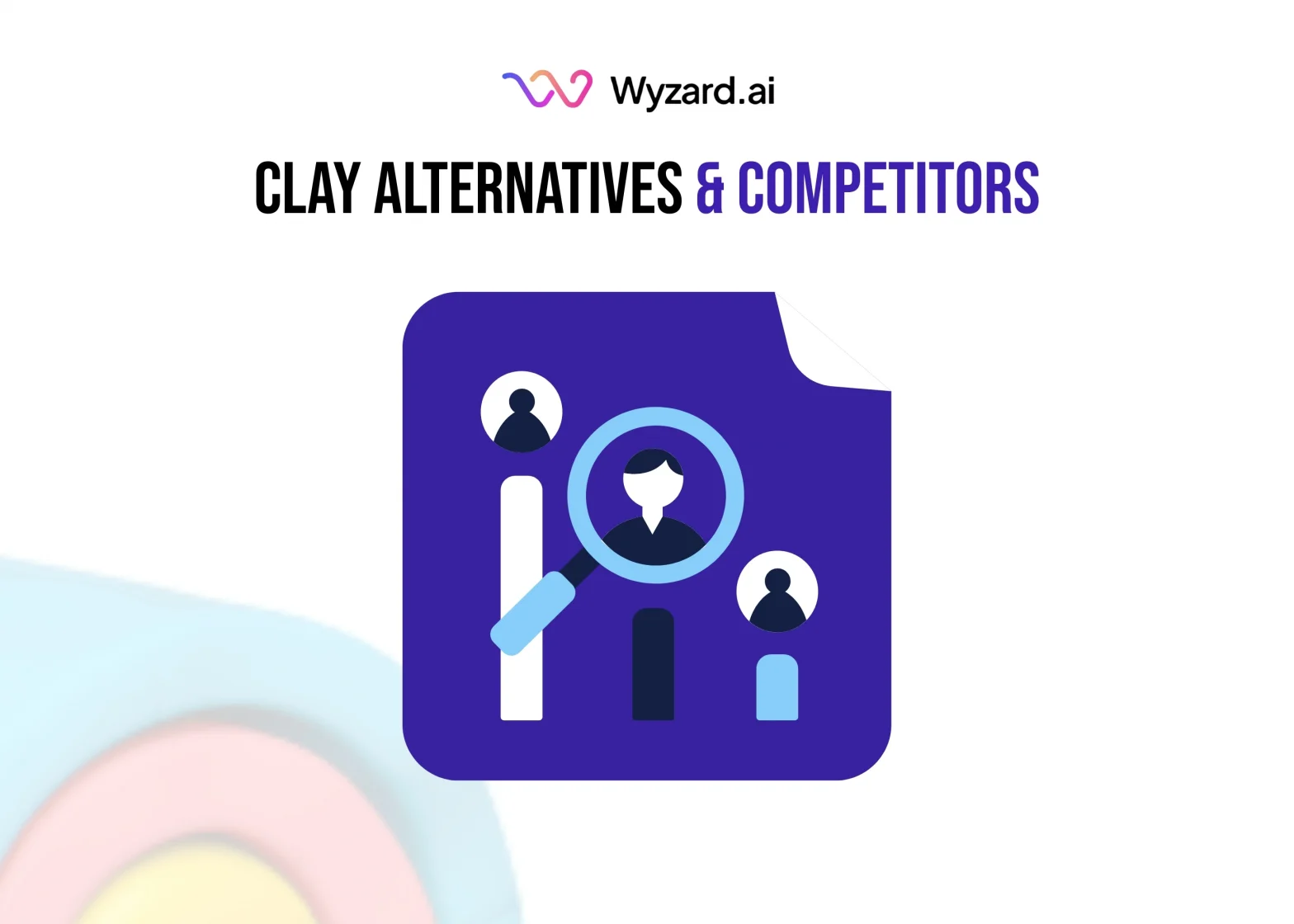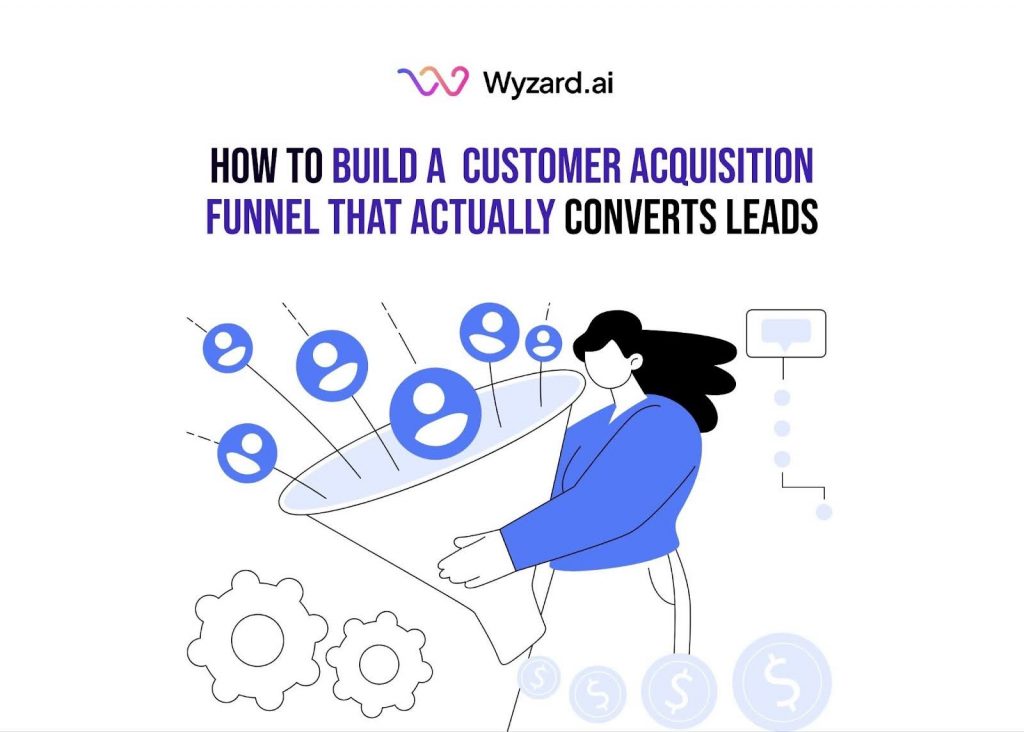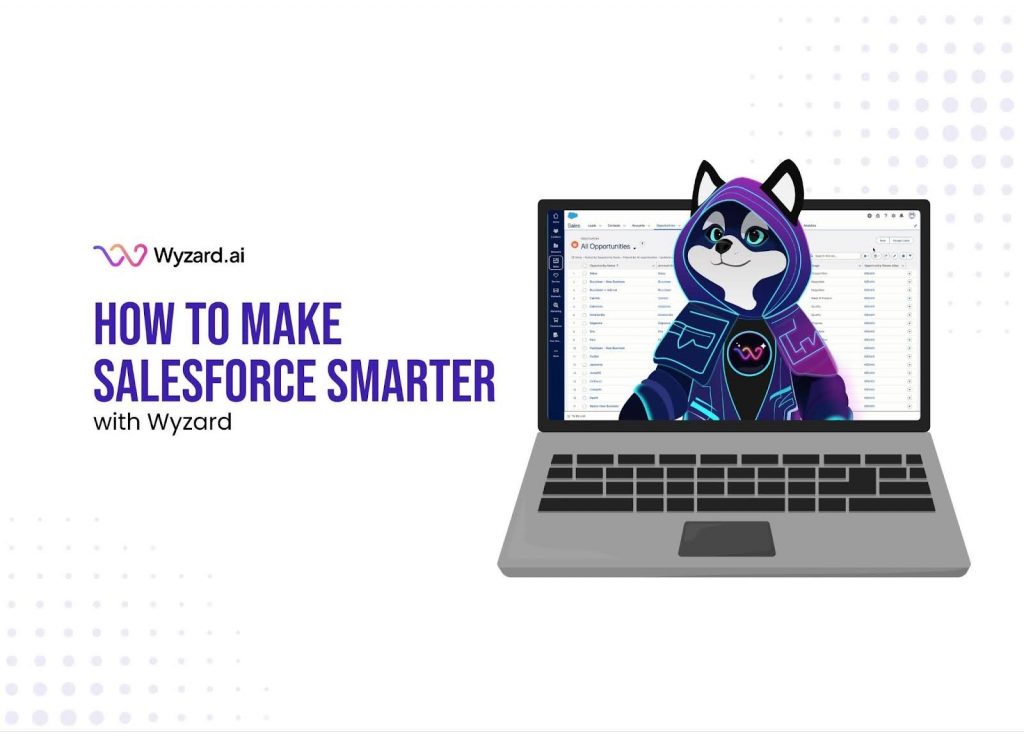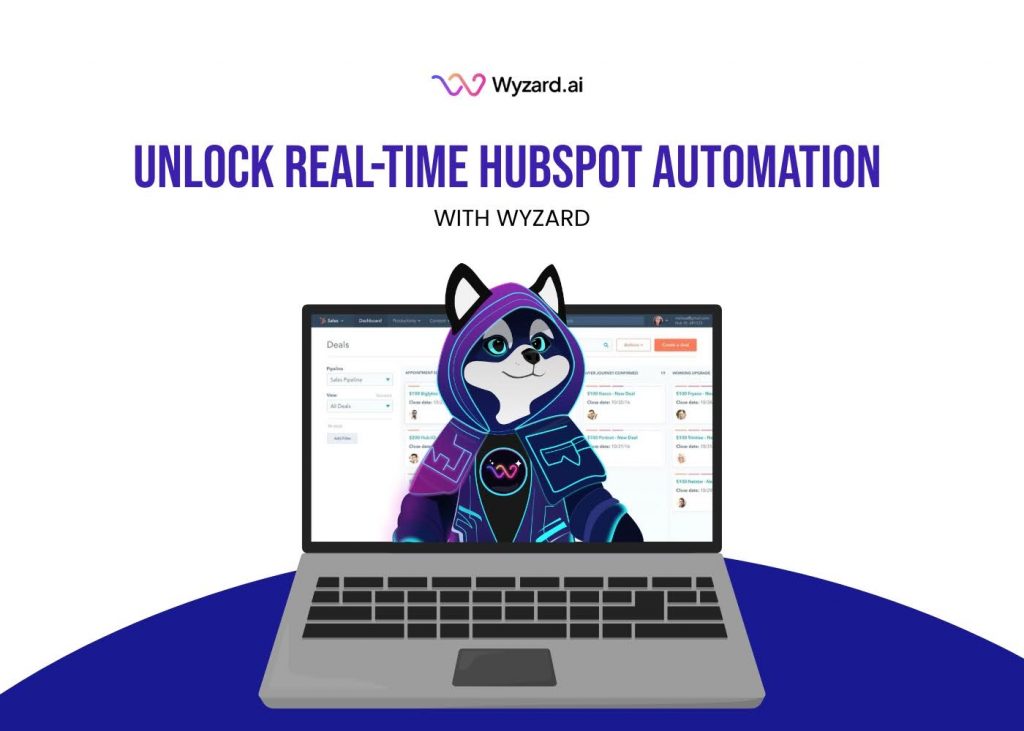You're generating traffic. Leads are visiting your website. But conversions? They're barely moving the needle. The problem isn't your ...

Subscribe Now
Your sales team enriches hundreds of leads weekly in Clay, but pipeline velocity keeps slowing. You’ve built sophisticated waterfall workflows, but prospects slip away while you’re configuring APIs and exporting data to outreach tools. When a high-intent visitor hits your pricing page at 3 PM, your team doesn’t find out until the next morning—and by then, they’ve already booked demos with two competitors.
Clay has become the go-to for data enrichment and prospecting automation, but many B2B SaaS marketing teams are discovering it’s not the complete solution they need. The platform excels at pulling together comprehensive prospect profiles, yet three critical gaps consistently drive teams toward Clay alternatives: no built-in engagement tools, unpredictable credit-based pricing, and most critically, no way to act on buyer signals in real time.
This guide examines the top 6 Clay alternatives and competitors that help GTM teams capture buyer intent, automate qualification, and convert interest into pipeline—without the technical overhead or the gap between signal and action.
Why B2B Marketing Teams Look for Clay Alternatives
Clay delivers powerful data enrichment through its waterfall approach, pulling information from multiple sources to build comprehensive prospect profiles. However, three gaps consistently push teams toward Clay alternatives:
First, the platform operates as a data layer, not a complete GTM system. After enriching your leads, you’ll need separate tools for outreach, follow-up, and pipeline management. This fragmentation creates handoff delays right when speed matters most.
Second, Clay’s credit-based pricing model can become unpredictable. Different enrichment actions consume varying credit amounts, making it difficult to forecast costs as your team scales. Small teams without API expertise often find themselves paying for credits they can’t fully utilize.
Third, there’s no native way to act on the signals you capture. When a prospect visits your pricing page or downloads a whitepaper, Clay can enrich their profile but actually reaching out requires exporting data to another platform. By the time your team responds, the buying moment has often passed.
Who Should Consider a Clay Alternative?
Clay remains a strong choice for data-focused teams with engineering resources who need maximum workflow customization. However, you should explore Clay alternatives if you:
- Need built-in email sequencing and multi-channel outreach
- Want predictable, flat-rate pricing instead of variable credits
- Require faster setup without API configuration expertise
- Need to act on buyer signals immediately, not hours later
- Want an all-in-one platform instead of stitching together multiple tools
- Have a small marketing team without dedicated RevOps support
Apollo.io: All-in-One Sales Intelligence with Built-In Engagement
Apollo.io combines Clay’s data enrichment capabilities with direct outreach tools in a single platform. The system includes over 275 million contacts and 73 million companies, with built-in email sequencing and call tracking.
What sets Apollo apart from Clay is its emphasis on action. After identifying high-fit prospects, you can launch personalized email campaigns, schedule calls, and track engagement without switching tools. The platform’s lead scoring automatically prioritizes accounts showing buying signals, helping your team focus on opportunities most likely to convert.
For teams managing complex buyer journeys, Apollo’s sequence builder supports multi-touch campaigns across email, phone, and LinkedIn. You can A/B test messaging, set up automatic follow-ups based on engagement, and sync all activity to your CRM. This eliminates the manual work of coordinating outreach across channels.
The analytics dashboard provides clear visibility into what’s working. Track open rates, response rates, and conversion metrics by campaign, rep, or segment. Unlike Clay, which focuses on data accuracy, Apollo shows you how prospects actually respond to your messaging.
Pricing starts at $49 per user monthly for basic features, with professional plans at $79 and organization-level access at $119. The structure remains predictable as you scale, with no variable credit consumption.
ZoomInfo: Enterprise-Grade Data with Intent Intelligence
ZoomInfo serves enterprise teams that need comprehensive company and contact data combined with buying intent signals. The platform tracks over 120 million business profiles and monitors intent data across thousands of topics.
Where ZoomInfo differentiates from Clay is in its intent intelligence. The system monitors when companies research topics related to your solution, visit competitor websites, or show other buying signals. This helps marketing teams identify accounts entering the market before they reach out to vendors.
The conversation intelligence feature analyzes sales calls and emails to surface patterns in successful deals. You’ll see which objections come up most often, which messaging resonates, and where deals typically stall. This feedback loop helps marketing teams refine their targeting and messaging based on what actually works in sales conversations.
ZoomInfo’s multi-channel engagement tools let you reach prospects through email, phone, and social channels. The unified inbox consolidates responses across channels, so your team can manage all prospect conversations in one place. For compliance-conscious teams, the platform maintains GDPR and CCPA standards across its global database.
Pricing isn’t publicly listed, ZoomInfo customizes packages based on team size and feature requirements. Enterprise teams typically find the investment justified by the quality of intent data and conversation insights.
Wyzard.ai: The Signal-to-Revenue AI for GTM Teams
Wyzard.ai takes a different approach than traditional Clay competitors. Instead of just enriching data, Wyzard.ai connects your entire GTM stack to capture buyer signals and trigger immediate action.
The platform positions itself as “Signal-to-Revenue AI”, built specifically to solve the problem of lost buyer intent. When prospects engage with your content, visit key pages, or respond to campaigns, Wyzard.ai captures these signals in real-time and orchestrates the right follow-up action across your tools.
Here’s what makes this approach different: Rather than waiting for someone to notice a hot lead in your database, Wyzard.ai automatically routes high-intent prospects to the right next step. A pricing page visitor might enter a decision-stage email sequence. A whitepaper download triggers personalized follow-up from sales. Someone who attended your webinar gets added to a product demo campaign.
Wyzard.ai’s agentic conversations feature engages website visitors instantly with AI-powered chat that understands context and intent. Unlike basic chatbots, these agents can qualify prospects, answer specific questions about your product, and book meetings, all while maintaining your brand voice.
The system also includes an agentic email that personalizes responses based on where each prospect stands in their journey. When someone replies to a campaign, Wyzard.ai analyzes their message and generates contextually relevant follow-up, timely, specific, and ready to advance the conversation.
For teams drowning in tools, Wyzard.ai’s multi-channel orchestration brings everything together. The platform integrates with your CRM, marketing automation, calendar, and ad platforms to ensure no signal goes unnoticed and no opportunity falls through the cracks. You’re not just collecting better data, you’re turning every buying moment into a revenue opportunity.
Wyzard.ai works particularly well for mid-market SaaS teams looking to increase pipeline efficiency without adding headcount. The AI handles routine qualification and follow-up, freeing your team to focus on high-value conversations with qualified prospects.
Lusha: Streamlined Prospecting with LinkedIn Integration
Lusha focuses on simplicity and speed for teams that need accurate contact data without complex setup. The platform specializes in finding verified email addresses and phone numbers, with particularly strong LinkedIn integration.
Unlike Clay’s multi-source waterfall approach, Lusha keeps things straightforward. Install the Chrome extension, visit a LinkedIn profile, and instantly access verified contact details. The system includes built-in email verification to reduce bounce rates and protect sender reputation.
For teams running outbound campaigns, Lusha’s email sequencing lets you create and launch personalized campaigns directly from the platform. Set up automated follow-ups, track engagement, and manage responses without exporting data to another tool. The built-in CRM handles pipeline management for teams that don’t use enterprise systems like Salesforce.
Lusha’s B2B prospecting database includes over 100 million business profiles, with strong coverage in North America and Europe. The platform emphasizes data accuracy over volume, with manual verification processes that reduce incorrect information.
The interface prioritizes ease of use over customization. New team members can start prospecting within minutes, without training on complex workflows or API configurations. This makes Lusha appealing for small teams that need results quickly.
Pricing begins with a free plan offering limited monthly credits. Paid plans start at $36 monthly for individual users (Pro Plan) and scale to $59 monthly for advanced features (Premium Plan). Larger teams can access custom pricing through the Scale Plan.
Snov.io: Email-Focused Lead Generation and Outreach
Snov.io combines email finding with campaign automation, designed for teams that prioritize email as their primary channel. The platform includes email verification, drip campaign builders, and a basic CRM for pipeline tracking.
What differentiates Snov.io from Clay is its focus on email deliverability. The system automatically verifies email addresses before you send, removing invalid contacts that could damage your sender reputation. Email warm-up features gradually increase sending volume to build trust with inbox providers.
The drip campaign builder supports personalized multi-touch sequences with A/B testing. You can segment prospects based on engagement, trigger follow-ups based on specific actions, and track performance across campaigns. All responses funnel into a unified inbox where your team can manage conversations and move deals forward.
Snov.io’s sales CRM provides basic pipeline management without requiring integration with enterprise systems. Track deals through custom stages, set reminders for follow-ups, and monitor team performance. For teams outgrowing spreadsheets but not ready for Salesforce, this hits a useful middle ground.
The email finder works across LinkedIn, company websites, and Snov.io’s own database. Search by company, role, location, or industry to build targeted prospect lists. The Chrome extension adds convenience for prospecting while browsing LinkedIn or researching companies.
Pricing starts at $39 monthly for 1,000 credits with basic features (Trial Plan). The Advanced Plan costs $99 monthly with 5,000 credits and full CRM access. Credit consumption varies by action—email finding, verification, and sending each use different amounts.
Nimbler: AI-Powered Outreach with Real-Time Data Validation
Nimbler positions itself as a simpler alternative to Clay for teams that want AI-driven personalization without complex workflows. The platform’s AI sales assistant creates hyper-personalized campaigns based on prospect data, company information, and buyer signals.
Unlike Clay’s focus on data enrichment, Nimbler emphasizes automated outreach. The AI analyzes each prospect’s background, identifies relevant talking points, and generates personalized email copy. This saves hours of manual research and writing while maintaining a human touch in your messaging.
The unified inbox consolidates responses from multiple campaigns and sender addresses. Your team can manage all prospect conversations in one place, with AI-suggested replies based on message context. This reduces response time and ensures consistent follow-up across your team.
Nimbler’s real-time validation continuously checks contact data accuracy. As people change jobs or email addresses become invalid, the system updates your database automatically. This prevents wasted outreach to outdated contacts and maintains a better sender reputation.
The platform includes unlimited users at a flat monthly price, making it cost-effective for larger teams. Unlike Clay’s credit-based model, you won’t face surprise charges as your team scales usage.
Nimbler works well for teams that want faster campaign launches without sacrificing personalization. The AI handles the research and writing that typically bottlenecks outbound efforts. However, teams needing deep customization or complex workflow automation may find the simplified approach limiting.
Pricing is $250 monthly for one all-inclusive plan, which includes 10,000 credits and unlimited users.
Choosing the Right Clay Alternatives for Your GTM Motion
| Platform | Best For | Key Strength | Starting Price |
| Apollo.io | All-in-one sales intelligence | Built-in engagement + large database | $49/month |
| ZoomInfo | Enterprise intent-based targeting | Conversation intelligence + intent data | Custom pricing |
| Wyzard.ai | Signal-to-revenue orchestration | Real-time signal capture + GTM automation | Contact for pricing |
| Lusha | Quick LinkedIn prospecting | Simple UI + verified contact data | $36/month |
| Snov.io | Email-first campaigns | Deliverability focus + campaign automation | $39/month |
| Nimbler | AI-powered personalization | Autonomous campaigns + flat pricing | $250/month |
The right Clay alternative depends on where your team needs the most help:
Choose Apollo.io if you want comprehensive data and engagement tools in one platform. The built-in outreach eliminates integration complexity while maintaining powerful segmentation and automation.
Choose ZoomInfo if buying intent signals and conversation intelligence justify premium pricing. Enterprise teams with complex buying committees benefit most from the depth of insights.
Choose Wyzard.ai if you’re tired of signals falling through gaps between tools. The platform excels at connecting your GTM stack and ensuring immediate action on every buying moment.
Choose Lusha if your team needs simple, fast prospecting without training overhead. The LinkedIn integration and straightforward interface get new team members productive quickly.
Choose Snov.io if email deliverability and campaign automation matter more than multi-channel complexity. The focus on email best practices helps protect sender reputation.
Choose Nimbler if AI-generated personalization at scale fits your outreach model. The flat pricing works well for larger teams running high-volume campaigns.
Making Buyer Signals Count: Moving Beyond Data Enrichment
Clay competitors have evolved beyond simple data enrichment to address the real challenge: converting buyer interest into pipeline before the moment passes. The best platforms don’t just tell you who your prospects are, they help you act on signals while prospects are actively evaluating solutions.
This matters because B2B buying journeys have compressed. Prospects research independently, evaluate multiple vendors simultaneously, and make decisions faster than ever. Marketing teams that respond within minutes have significantly higher conversion rates than those that wait hours or days.
The gap between signal and action is where revenue leaks. A prospect downloads your pricing guide, but by the time someone notices and follows up, they’ve already scheduled demos with competitors. Another prospect visits your case studies page three times in a week, showing clear buying intent, but no one on your team knew to reach out.
Modern Clay alternatives solve this through automation and orchestration. They monitor prospect behavior across channels, score engagement based on buying signals, and trigger appropriate follow-up automatically. Some use AI to personalize outreach at scale. Others focus on connecting your existing tools so signals flow seamlessly from marketing to sales.
The question isn’t whether to replace Clay, it’s whether your current approach lets prospects slip away while you’re enriching data. If you’re losing deals to faster competitors or struggling to keep up with qualified leads, the problem isn’t data quality. It’s the gap between knowing someone’s interested and actually doing something about it.
FAQs
Wyzard.ai focuses on signal-to-revenue orchestration rather than just data enrichment. When prospects engage with your content or show buying intent, Wyzard.ai automatically triggers the right action across your GTM stack, whether that’s personalized email follow-up, sales notifications, or adding them to specific nurture sequences. Clay enriches data but requires separate tools to act on it.
Yes, Apollo.io provides both data enrichment and built-in engagement tools in one platform. You get access to a large B2B database plus email sequencing, call tracking, and LinkedIn outreach capabilities. This eliminates the need to export data from Clay into separate outreach tools, reducing handoff delays and keeping everything in one system.
ZoomInfo monitors buying signals across thousands of topics, tracking when companies research solutions like yours or visit competitor sites. This intent intelligence helps you identify accounts entering the market before they reach out to vendors. Clay focuses on enriching contact and company data but doesn’t provide the same level of behavioral intent tracking.
Lusha prioritizes simplicity with a Chrome extension that instantly provides verified contact details from LinkedIn profiles. The straightforward interface requires minimal training compared to Clay’s more complex workflow builder and API integrations. For small teams that need to start prospecting quickly without technical setup, Lusha offers a faster path to results.
Focus on where your team loses the most revenue opportunity. If signals fall through gaps between tools, prioritize platforms like Wyzard.ai that orchestrate your GTM stack. If data quality causes bounce rates and wasted outreach, look at verification-focused options like Snov.io. If you need faster response times, choose tools with built-in engagement like Apollo.io. Match the solution to your specific bottleneck rather than chasing the most features.
Other blogs
The latest industry news, interviews, technologies, and resources.
How to Make Salesforce Smarter with Wyzard.ai
Your CRM is packed with contacts, but how many buying signals are you missing right now? A prospect just ...

Unlock Real-Time HubSpot Automation with Wyzard.ai
Your HubSpot portal holds valuable data about every lead, deal, and customer interaction. But if you're waiting hours, or ...

 We’ve secured funding to power Signal-to-Revenue AI to GTM teams globally. →
We’ve secured funding to power Signal-to-Revenue AI to GTM teams globally. →


